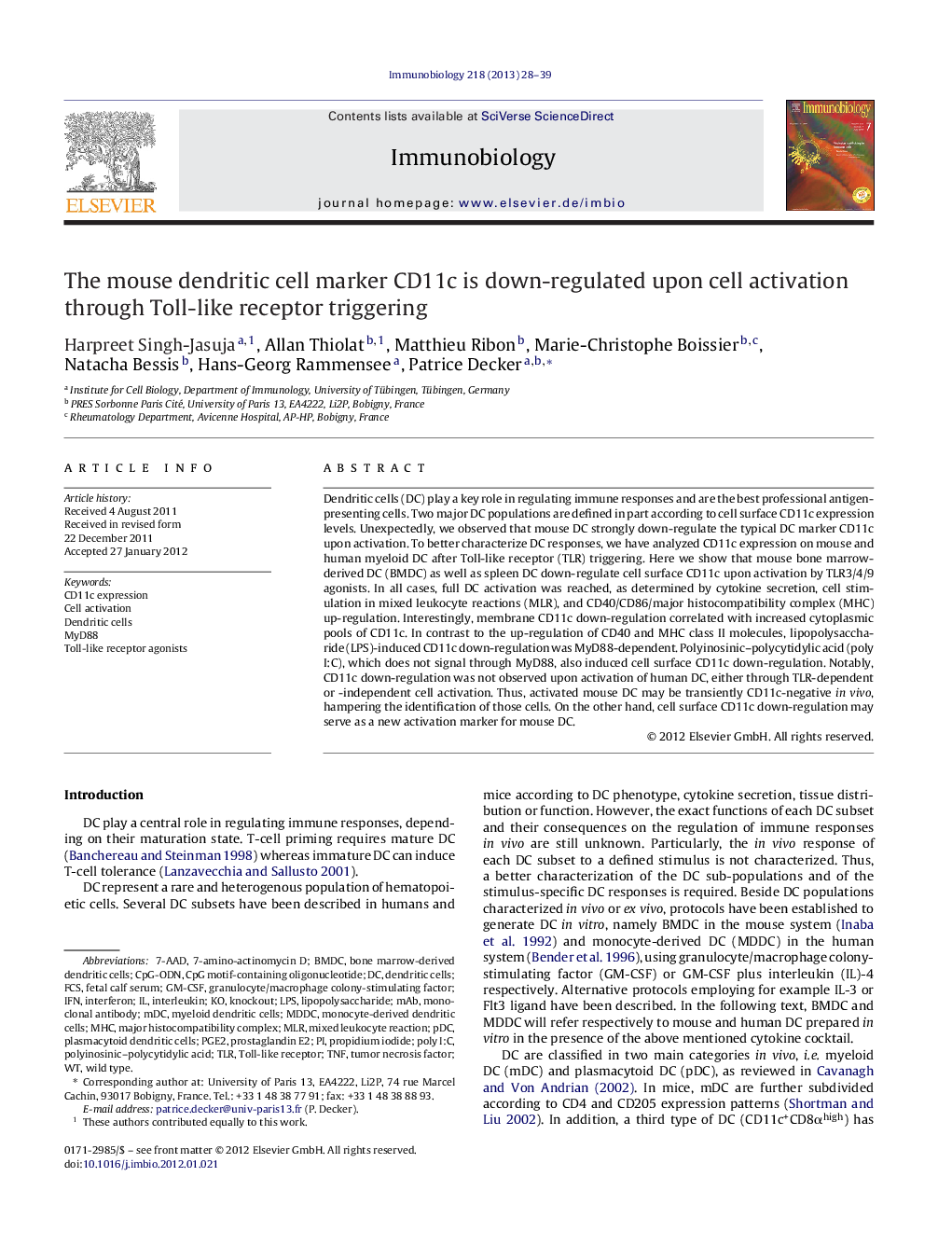| Article ID | Journal | Published Year | Pages | File Type |
|---|---|---|---|---|
| 2183022 | Immunobiology | 2013 | 12 Pages |
Dendritic cells (DC) play a key role in regulating immune responses and are the best professional antigen-presenting cells. Two major DC populations are defined in part according to cell surface CD11c expression levels. Unexpectedly, we observed that mouse DC strongly down-regulate the typical DC marker CD11c upon activation. To better characterize DC responses, we have analyzed CD11c expression on mouse and human myeloid DC after Toll-like receptor (TLR) triggering. Here we show that mouse bone marrow-derived DC (BMDC) as well as spleen DC down-regulate cell surface CD11c upon activation by TLR3/4/9 agonists. In all cases, full DC activation was reached, as determined by cytokine secretion, cell stimulation in mixed leukocyte reactions (MLR), and CD40/CD86/major histocompatibility complex (MHC) up-regulation. Interestingly, membrane CD11c down-regulation correlated with increased cytoplasmic pools of CD11c. In contrast to the up-regulation of CD40 and MHC class II molecules, lipopolysaccharide (LPS)-induced CD11c down-regulation was MyD88-dependent. Polyinosinic–polycytidylic acid (poly I:C), which does not signal through MyD88, also induced cell surface CD11c down-regulation. Notably, CD11c down-regulation was not observed upon activation of human DC, either through TLR-dependent or -independent cell activation. Thus, activated mouse DC may be transiently CD11c-negative in vivo, hampering the identification of those cells. On the other hand, cell surface CD11c down-regulation may serve as a new activation marker for mouse DC.
